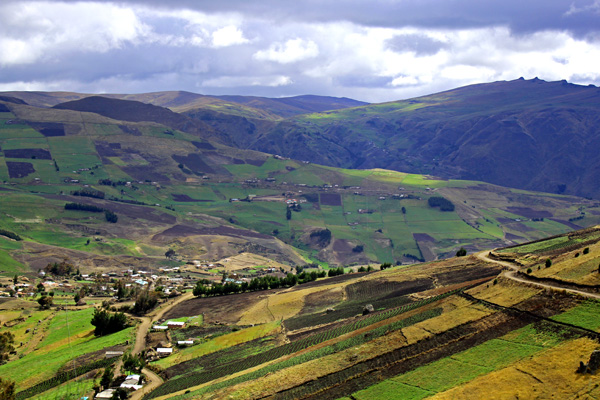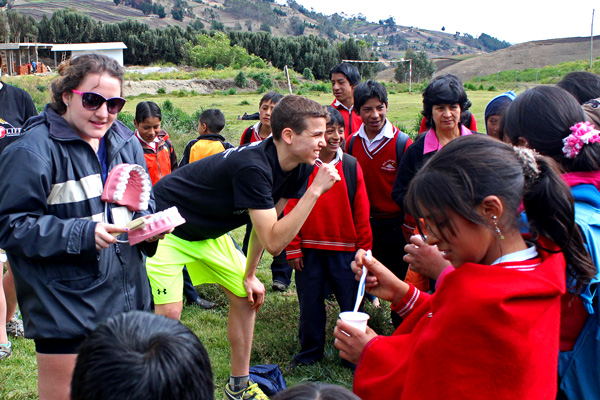On my very first day helping out on a clinic in Riobamba, Ecuador, we travelled past rolling green hills, steep river valleys, and then into thick mist to get to the community. When we emerged from the clouds, it seemed as though we were in a different world. Mountainous and rugged, the community we finally reached was remote, with no other villages in view. Vaguely reminding me of Scotland, we were at an altitude much higher than Machu Picchu.
With my only mobile clinic experience being in the sprawling metropolis of Lima, Peru, the day was full of interesting new experiences. The first and most apparent difference between this community and any other place I have been was the traditional clothing. Each community member wore layer upon layer of bright red, pink, blue, and green clothing, often with intricate patterns. Contrasted with the dull vegetation and town buildings, these vivid colors positively shined.
Despite it being the height of summer, the fairly cold temperature was also strange compared to hot, sunny Lima. Almost every child we saw had a bright red face, which we all soon realized was red from their raw and irritated skin. Because the community sat high up and close to the Equator, the cold there combined with bright sun cracked the children’s skin year-round. Regardless, the tooth brushing station that day was surrounded by happy and energetic kids, per usual.
Another fascinating aspect of that day was the extent to which the community spoke their native language, Quechua. It was clearly everyone’s first language, from young children to their grandparents. While most people easily spoke Spanish to us from MEDLIFE, it was striking to hear young children conversing in this beautiful language that sounds so different from Spanish.
Yet the most remarkable difference in this community did not occur to me until the end of the day, as we packed up the clinic and carried all the supplies back to the buses. Despite a lack of garbage bins, there was almost no trash on the ground. No soda bottles, no candy wrappers, and no chip bags. As I noticed this, I realized it simply was because no packaged foods were sold in the village. With no stores in sight, and I soon realized this community lives off their land and the little that they do buy and sell comes from the closest town an hour away. I was told by a doctor thatthe consequence of this is apparent in the low rates of diabetes but high rates of malnutrition in the community.
Even facing immense hardships—lacking access to a proper education, jobs, enough food, or medical care—it was clear to me how strong and beautiful this community was. Isolated and far from the nearest city, it has managed to hold onto an incredible culture and traditions. I hope that MEDLIFE can continue to bring them much needed medical care and education, while simultaneously showing student volunteers what a diverse and unique world we live in.


